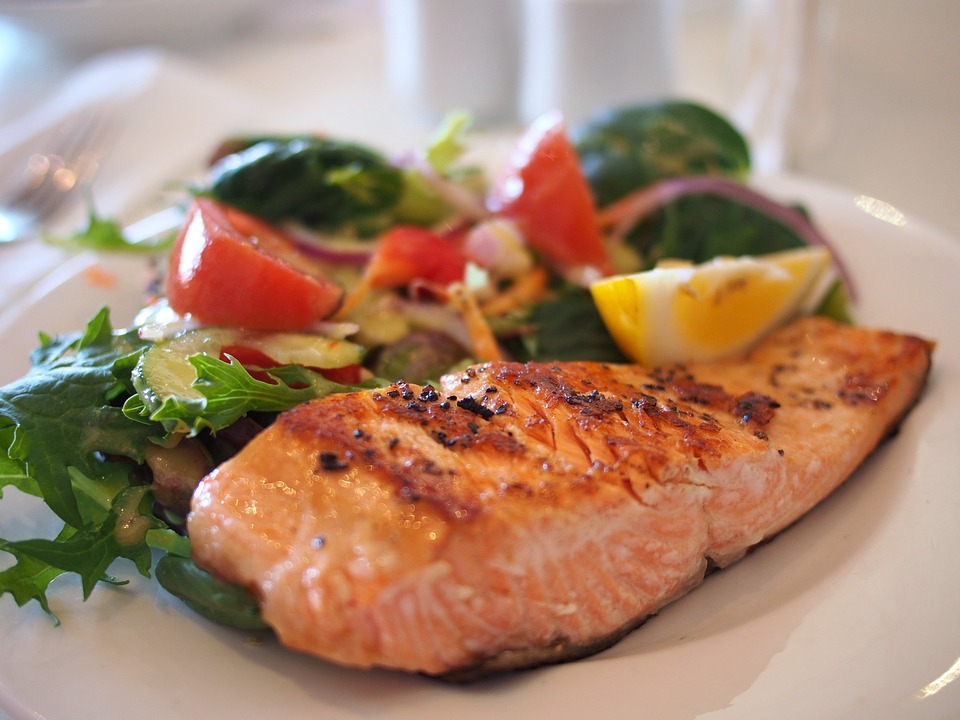À Table!: The French Meal in Seven Courses (Part 1) Posted by mtaulier on Apr 2, 2014 in Culture, Uncategorized
“Sit down for a French meal and expect to stay seated for at least a couple hours.” I remember hearing someone say these words many years ago and later realized truer words were never spoken.
You don’t have to be French pour apprécier la bonne nourriture (to appreciate good food) but for people unaccustomed to sitting down to eat for several hours at a time, this can be quite an experience. I recall on more than one occasion sitting down pour le déjeuner (for lunch) around 1 pm and being served le café (coffee) around 4 pm only to stay seated around the table for a couple more hours until le dîner (dinner) was served around 6 pm. I think our record was close to 8 hours from the moment we sat down to eat lunch to when we got up from the table after dinner.
Traditional French meals, more specifically lunch and dinner, consist of several courses to be eaten en succession (in succession). Dine at any fine restaurant in France and be prepared to spend une bonne partie de l’après-midi ou du soir (a good part of the afternoon or evening) eating. A French meal should not be eaten hastily. This is not fast food. So sit back and enjoy the good company, good food and good wine and watch as the hours fly by.
Follow along as we explore the first three courses of a typical repas Français (the French meal). Keep in mind that there are no hard rules and that a meal can have as many courses as the chef sees fit.
1. L’Apéritif (Aperitif): L’apéritif doit ouvrir l’appétit (must open the appetite). This first course usually consists of boissons alcoolisées (alcoholic drinks/cocktails) such as pastis (a French liqueur flavored with anise and mixed with water) and salty foods (olives, crackers, mixed nuts) to be consumed in moderation. L’apéritif is usually served dans le salon (in the living room) or anywhere away from the dining room.
Hors-d’œuvres is a French term also used in the English language to describe the finger foods served before the main dish. It comes from the French words hors (outside of/apart from) and œuvre (work) meaning it is served apart from the main dish.

2. L’Entrée (Appetizer): Americans refer to the main dish of a meal as the entrée but in France, l’entrée—meaning entry—is eaten just prior to the main dish. Served at the table, l’entrée may consist of poisson (fish), charcuterie (sausages, pâté, jambon), quiche, or some other baked dish. Entrées can be served either hot or cold and can be seasonal and/or regional. This is also where la première bouteille de vin (the first bottle of wine) is served to complement the dish.
3. Le Plat Principal/Plat de Résistance (The Main Dish): The main dish is, as you may have guessed, the heart of the meal where la viande (meat—beef/veal, chicken, pork, lamb, duck, etc.) or le poisson (fish) is often served alongside des légumes (vegetables) and a starch such as des pommes de terre (potatoes), du riz (rice) or des pâtes (pasta).
Le plat principal is le plus copieux (the most hearty/copious) of all the courses and you must take care not to eat too much as there are still more courses to follow. Another bottle of wine is carefully selected to pair perfectly with the meat or the fish.
Stay tuned for second part of our lesson where we will explore the last three courses of a typical French meal.

Build vocabulary, practice pronunciation, and more with Transparent Language Online. Available anytime, anywhere, on any device.




Comments:
Joseph Morris:
Link to the other part of the article please!
Sophie DuPuis:
Can’t find part two of the French meal in seven courses post.
Barb:
Where is part two?